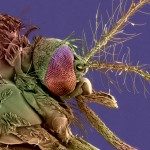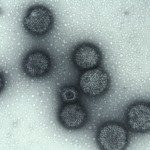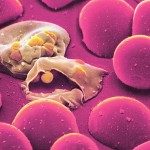Link to Pubmed [PMID] – 24681263
Infect. Genet. Evol. 2014 Jun;24:116-26
Like most arthropod-borne viruses (arboviruses), chikungunya virus (CHIKV) is a RNA virus maintained in nature in an alternating cycle of replication between invertebrate and vertebrate hosts. It has been assumed that host alternation restricts arbovirus genome evolution and imposes fitness trade-offs. Despite their slower rates of evolution, arboviruses still have the capacity to produce variants capable to exploit new environments. To test whether the evolution of the newly emerged epidemic variant of CHIKV (E1-226V) is constrained by host alternation, the virus was alternately-passaged in hamster-derived BHK-21 cells and Aedes aegypti-derived Aag-2 cells. It was also serially-passaged in BHK-21 or Aag-2 cells to promote adaptation to one cell type and presumably, fitness cost in the bypassed cell type. After 30 passages, obtained CHIKV strains were genetically and phenotypically characterized using in vitro and in vivo systems. Serially- and alternately-passaged strains can be distinguished by amino-acid substitutions in the E2 glycoprotein, responsible for receptor binding. Two substitutions at positions E2-64 and E2-208 only lower the dissemination of the variant E1-226V in Ae. aegypti. These amino-acid changes in the E2 glycoprotein might affect viral infectivity by altering the interaction between CHIKV E1-226V and the cellular receptor on the midgut epithelial cells in Ae. aegypti but not in Aedesalbopictus.







